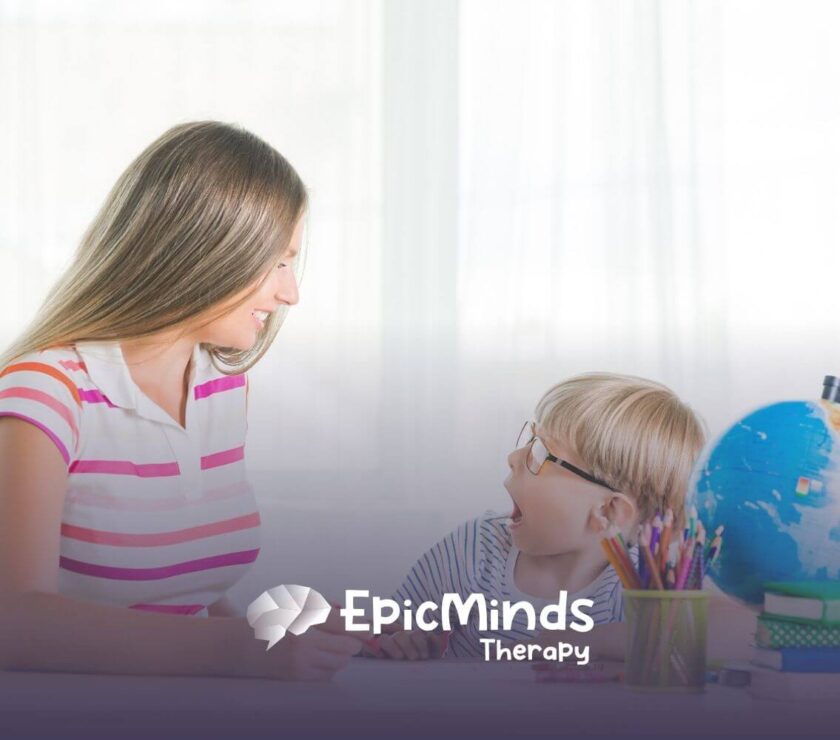Key Highlights
Here’s what you’ll learn in this blog:
- Applied Behavior Analysis (ABA) is an evidence-based approach parents can apply at home.
- Parent involvement strengthens consistency and helps children generalize new skills.
- Core ABA techniques — like positive reinforcement, prompting, and modeling — build communication and life skills.
- A structured, sensory-friendly environment helps children focus and thrive.
- Home-based ABA strategies can support children with autism in learning communication, routines, and social interaction.
As parents, we want to help our children grow, communicate, and feel confident. Applied Behavior Analysis (ABA) offers a structured yet flexible way to make that happen — right at home. ABA therapy for autism is one of the most effective, research-backed methods for teaching new behaviors, reducing challenges, and nurturing independence.
While ABA therapy is often guided by professionals, parents can use many of its techniques in daily routines. This guide breaks down practical, easy-to-use ABA strategies at home so you can help your child build communication, emotional regulation, and everyday life skills — all within a supportive and familiar environment.
Why Parents are Essential to ABA Therapy Success
Parent-led ABA therapy is powerful because it brings learning into your child’s natural world. You know your child’s preferences, motivators, and challenges better than anyone — and that insight makes your involvement invaluable.
The Power of Parent Involvement in ABA
When parents actively practice ABA behavior techniques at home, children learn to generalize skills beyond the therapy room. Whether it’s brushing teeth, sharing toys, or asking for help, these moments turn into real learning opportunities.
Partnering with a Board Certified Behavior Analyst (BCBA) ensures that your home strategies match your child’s therapy plan. This collaboration keeps progress consistent and builds confidence — for both you and your child.
How ABA Therapy Enhances Communication and Daily Routines
One of the greatest strengths of ABA therapy is its structured approach to teaching new skills. By breaking complex behaviors into small, manageable steps, children can achieve success — one moment at a time.
Building Communication Skills Through ABA
Communication is a cornerstone of ABA therapy. At home, parents can use ABA communication strategies such as prompting, modeling, and reinforcement to encourage speech or nonverbal communication. For example, if your child points to a snack, model the word “cracker,” prompt them to say it, and then reward every attempt.
This kind of positive reinforcement in ABA helps children make meaningful connections between actions and outcomes, promoting both verbal and social development.
Strengthening Daily Routines
Using ABA therapy at home for daily routines helps reduce stress and increase independence. Break down tasks — like brushing teeth or getting dressed — into step-by-step visuals or picture schedules. Reinforce each completed step with praise or small rewards. Over time, your child will develop confidence and consistency in these everyday activities.
Preparing to Practice ABA Therapy at Home
Before diving into ABA activities, it’s important to set up your environment and gather the right supports. A positive, organized space sets the tone for success.
Recommended Tools and Visual Supports
Here are some simple, low-cost tools parents can use to make home-based ABA therapy more effective:
| Tool Type | Examples | How It Helps |
| Visual Supports | Picture schedules, cue cards | Provide structure and predictability. |
| Timers | Digital or sand timers | Ease transitions between activities. |
| Reinforcement Tools | Token boards, sticker charts | Motivate positive behavior and track progress. |
| Apps | Educational or communication apps | Encourage learning through play and repetition. |
Using these tools gives children clarity and confidence. For example, a visual schedule can make morning routines smoother, while a reward chart encourages consistent participation in tasks.
Creating a Positive ABA Learning Environment
A structured home environment makes ABA sessions calm and productive. Designate a quiet area free from distractions where learning can take place. Keep toys and materials neatly organized and accessible.
Consistency is key — establish daily routines for play, meals, and bedtime. Reinforce effort frequently and make each learning experience positive. Remember, your encouragement is the most powerful motivator your child has.
Step-by-Step Guide to Applying ABA Techniques at Home
Learning to use ABA therapy techniques at home doesn’t have to be overwhelming. Here’s a clear, parent-friendly roadmap to get started.
Step 1: Identify Target Behaviors and Set SMART Goals
Start by choosing one or two goals that matter most. Maybe you want your child to ask for help, share toys, or complete a daily task. Define each behavior using SMART goals — Specific, Measurable, Achievable, Relevant, and Time-bound.
This helps track progress and maintain consistency. Your behavior analyst can help identify goals that fit your child’s developmental level and daily routines.
Step 2: Use Positive Reinforcement
Positive reinforcement is at the heart of ABA therapy for autism. When your child performs a desired behavior, reward them immediately. This could be with praise (“You did it!”), a small toy, or extra playtime.
The reward strengthens the behavior, helping your child understand what’s expected and feel proud of their success. Consistency and timing are everything — the quicker the reinforcement, the stronger the learning connection.
Step 3: Model and Prompt Desired Behaviors
Modeling and prompting help children learn new actions by watching and practicing. Demonstrate what you want your child to do, whether it’s tying shoes or asking for help. Then, gently guide them through the steps with verbal, visual, or physical prompts.
As they grow more independent, fade prompts gradually — a process called prompt fading — to encourage confidence and autonomy.
Step 4: Track Progress and Adjust as Needed
Keeping track of your child’s development helps you celebrate growth and refine your approach. You can use a data sheet, notebook, or even a notes app to log behaviors, challenges, and improvements.
Regular check-ins with your child’s therapist or BCBA ensure you’re using the most effective ABA home strategies. Small, consistent adjustments keep learning fun, flexible, and sustainable.
Conclusion
Using ABA techniques at home allows parents to turn everyday moments into meaningful learning opportunities. With patience, consistency, and the right tools, you can help your child gain communication skills, independence, and confidence — all while strengthening your bond.
At Epic Minds Therapy, we specialize in helping families across North Carolina implement effective, evidence-based ABA therapy for autism. Whether you’re interested in in-home ABA therapy designed to support growth in your child’s own space, or school-based ABA therapy to build success in the classroom, our compassionate team is here to help.
Take the first step today — contact Epic Minds Therapy for a free consultation and discover how ABA therapy can bring calm, confidence, and progress to your child’s daily life.
Frequently Asked Questions
1. What are the best ABA techniques parents can use at home?
The most effective home-based ABA techniques include positive reinforcement, modeling, prompting, and visual supports. These methods make learning enjoyable while helping your child practice important life and social skills in familiar settings.
2. How often should I practice ABA therapy at home?
Consistency matters more than duration. Short, structured sessions (5–15 minutes each) spread throughout the day are highly effective. Everyday activities — like mealtime or playtime — can be excellent opportunities for practice.
3. Is ABA therapy at home suitable for every child with autism?
Yes, most children benefit from parent-led ABA strategies at home. However, collaboration with a certified ABA therapist ensures techniques are tailored to your child’s unique goals, abilities, and sensory needs.
Sources:
- https://gsep.pepperdine.edu/blog/posts/aba-techniques-strategies-for-behavior-analysts.htm
- https://online.regiscollege.edu/blog/aba-therapy-examples
- https://my.clevelandclinic.org/health/treatments/25197-applied-behavior-analysis
- https://pmc.ncbi.nlm.nih.gov/articles/PMC9458805/
- https://www.verywellmind.com/what-is-an-aba-design-2794809
- https://www.autismparentingmagazine.com/aba-techniques-adaptations/




